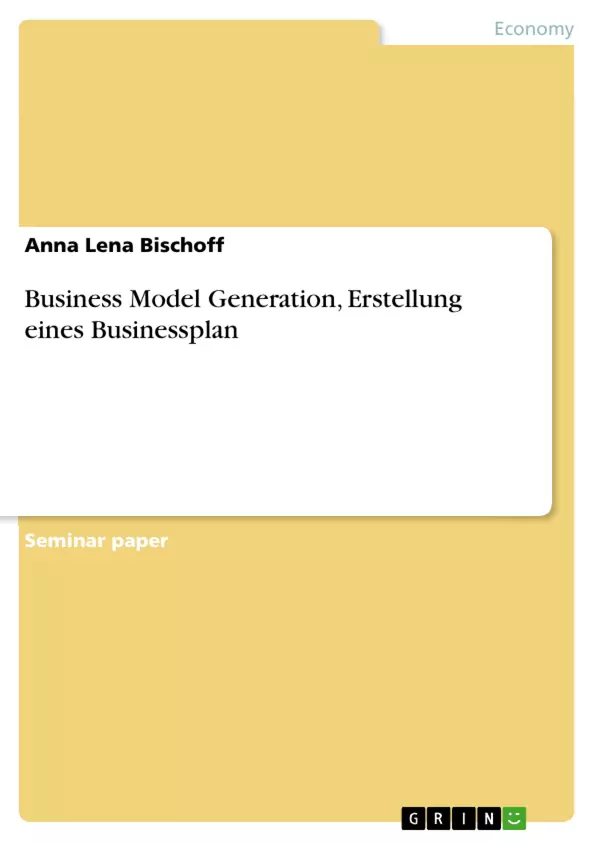Example on how to develop a Businessplan based on the concept "Canvas", the success story of A. Osterwalder und Y. Pigneur and their book "Business Model Generation". This document includes Teamcomposition,description of the Offer to the customer (priduct/value), delivery channels, Implementationplan, Marketingplan, Financial basics (Break-Even-Analyse, Profit and Loss Budget), Risk Analysis (SWOT, PESTEL, etc.
Table of Contents
- Summary
- Offer - Business Idea
- The Individuals / The Team
- Business and Customer
- Business Environment
- Risk Analysis
- Economic Relationship
- Conclusion
- Appendixes
Objectives and Key Themes
The primary objective of this business plan is to outline a viable business model for a Fengshui consulting service in Germany. This service aims to cater to the growing demand for healthy living, spiritual well-being, and home decoration among a specific customer segment. The business plan explores the target market, potential customer pain points, and the value proposition offered by the Fengshui consulting service.
- Combining home decoration with spirituality and healthy lifestyle
- Offering a service that helps customers improve their environment and address health concerns
- Targeting a specific customer segment: "Female LOHAS" with a focus on sustainable living, ecological initiatives, and a high interest in Asian culture
- Developing a long-term customer relationship built on trust and personal recommendations
- Exploring both direct B2C (Business to Customer) and B2B (Business to Business) channels
Chapter Summaries
The "Summary" chapter provides a brief overview of the business model, highlighting the key value proposition, customer segments, and revenue streams. The "Offer - Business Idea" chapter elaborates on the concept of Fengshui consulting services, emphasizing its potential to address customer needs related to health, well-being, and home environment. The "The Individuals / The Team" chapter presents the team's qualifications, experience, and motivation. The "Business and Customer" chapter delves into the target market, customer segmentation, and pain points, outlining the specific needs and desires of the "Female LOHAS" customer segment. The "Business Environment" chapter is expected to analyze the competitive landscape, market trends, and potential challenges. The "Risk Analysis" chapter will likely identify and assess potential risks associated with the business venture. The "Economic Relationship" chapter may discuss the financial aspects of the business, including cost structure, pricing, and revenue generation. Finally, the "Conclusion" chapter is likely to summarize the key findings of the business plan and outline future plans and strategies.
Keywords
Fengshui, home decoration, healthy lifestyle, spirituality, customer segmentation, "Female LOHAS," target market, customer pain points, value proposition, B2C, B2B, business model, risk analysis, economic relationship.
- Quote paper
- Anna Lena Bischoff (Author), 2014, Business Model Generation, Erstellung eines Businessplan, Munich, GRIN Verlag, https://www.grin.com/document/279647



